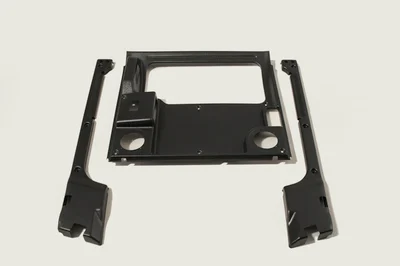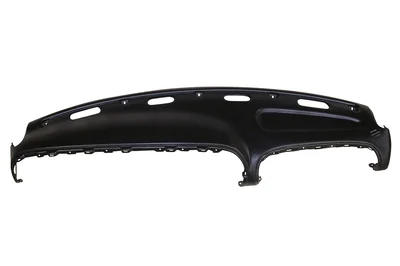Choosing the Right Material for Thermoformed Vehicle Components
When it comes to selecting materials for vehicle components, manufacturers must carefully consider a range of factors including durability, weight, aesthetics, and safety. In this article, we take a closer look at the key considerations involved in choosing materials for thermoformed parts, with a focus on how these materials perform in real-world applications.
Impact Resistance and Durability
 Vehicle parts are constantly exposed to various stresses throughout their lifespan. From everyday impacts caused by luggage, electronics, and passenger contact, to the harsh chemicals used during cleaning, components must be able to withstand a wide range of conditions. Additionally, the vibrations and movements inherent in vehicle operation, along with exposure to environmental elements, make the performance requirements even more demanding.
Vehicle parts are constantly exposed to various stresses throughout their lifespan. From everyday impacts caused by luggage, electronics, and passenger contact, to the harsh chemicals used during cleaning, components must be able to withstand a wide range of conditions. Additionally, the vibrations and movements inherent in vehicle operation, along with exposure to environmental elements, make the performance requirements even more demanding.
Historically, materials like Glass Reinforced Plastic (GRP or fiberglass) were popular due to their stiffness and strength. However, they tend to be brittle and can crack or chip under impact. Modern thermoplastics, especially KYDEX® materials, offer superior impact resistance and maintain their structural integrity over time, making them an increasingly preferred choice for high-performance applications.
Weight Considerations
With fuel efficiency being a top priority in modern vehicle design, material density plays a crucial role. Thermoplastics provide a significant advantage in terms of weight savings compared to traditional materials like steel or aluminum. They offer excellent strength-to-weight ratios, which is essential for improving fuel economy and reducing environmental impact.
This lightweight characteristic not only helps in meeting regulatory standards but also contributes to better handling and performance, making thermoplastics an attractive option for many manufacturers today.
Aesthetic Durability
The long-term appearance of vehicle interiors and exteriors is vital, especially in commercial and public transport settings. Through-colored thermoplastics retain their color even when scratched, and textured surfaces help mask minor wear and tear that accumulates over time. Unlike painted metals or laminates, there’s no surface coating to peel or chip, ensuring consistent visual appeal over the component's lifetime.
These materials come in a wide variety of colors, patterns, and textures—including woodgrain and metallic finishes—offering both aesthetic flexibility and long-lasting durability without compromising on quality.
Interior Components
Interior parts such as seatbacks, tray tables, and wall panels require materials that meet strict flame retardant standards while offering good impact resistance. These components must also withstand frequent cleaning without degrading and maintain their appearance over time.
Weight is particularly important in interior applications, as it directly affects the overall mass of the vehicle and, therefore, its fuel efficiency and performance.
Exterior Components
Exterior vehicle parts face even harsher conditions, requiring materials that can handle extreme weather, road chemicals, and cleaning agents. These components must remain durable in abrasive environments while maintaining their appearance and structural integrity.
UV stability and corrosion resistance are critical for exterior parts, making material selection a key factor in ensuring long-term performance and reliability.
Fabrication Advantages
 Modern thermoplastics bring several manufacturing benefits that make production more efficient. They can be thermoformed into complex shapes with lower tooling costs than traditional metal forming methods. This allows for the production of large, detailed parts without sacrificing quality.
Modern thermoplastics bring several manufacturing benefits that make production more efficient. They can be thermoformed into complex shapes with lower tooling costs than traditional metal forming methods. This allows for the production of large, detailed parts without sacrificing quality.
Thermoplastics also eliminate the need for pre-drying before forming, reduce cycle times, and operate at lower temperatures. Post-forming processes like trimming can be done easily using basic automation or even standard woodworking tools, further streamlining the manufacturing process.
Customization Options
Material selection should also take into account customization options to meet specific design needs. Many thermoplastic manufacturers offer a wide range of standard colors and textures, with custom options available through reasonable minimum orders. Surface textures can be tailored to achieve both functional and aesthetic goals, and reinforcing features can be added during the forming process, providing greater design flexibility.
Safety and Compliance
Different transportation sectors have unique regulatory requirements that influence material choices. For example, aerospace applications must comply with FAR25.853 standards, while mass transit vehicles follow NFPA 130 guidelines. Automotive components need to meet FMVSS 302 standards. Across all industries, flame resistance and smoke toxicity are key factors in material approval.
When it comes to thermoformed vehicle components, modern thermoplastics offer clear advantages over traditional materials. Their combination of durability, impact resistance, and weight savings makes them a compelling choice. Plus, their ease of fabrication, wide range of customization options, and strong compliance with safety standards ensure they are suitable for a variety of transportation applications.
While traditional materials like metals and GRP still play a role in vehicle manufacturing, thermoplastics provide an optimal balance of performance, aesthetics, and cost-effectiveness for many modern vehicle designs.
Pipe End Sealing Machine China
Pipe End Sealing Machine,Cold Sealing Machine,Pipe End Cold Sealing Machine,Pipe End Closing Machine
Zhangjiagang heshun machinery manufacturer co.,ltd. , https://www.hsformer.com